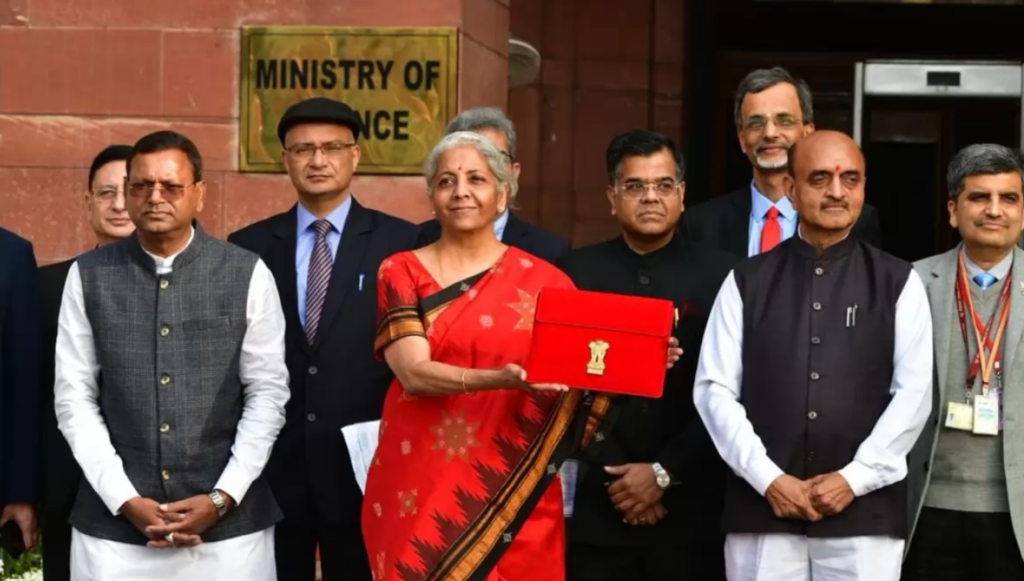-Satviki Sanjay & Shreya Biswas | February 1, 2023
Finance Minister announced a 33% increase in capital expenditure in 2023-24

Finance Minister Nirmala Sitharaman announced record borrowings to boost capital spending for economic growth.
India’s administration will target a fiscal deficit of 5.9 per cent of gross domestic product (GDP) for financial year 2023-24, Sitharaman said in Parliament on Wednesday. The government will borrow Rs.15.8 lakh crore to bridge this gap and aid production and consumption.
The government plans to spend Rs.10 lakh crore, or 3.3 per cent of GDP, on capital investment. The estimate, which has been increased for a third year in a row, is “central to the government’s efforts to enhance growth potential and job creation, crowd-in private investments, and provide a cushion against global headwinds”, said Sitharaman.
The Budget, which is the Modi government’s last full budget before next year’s general elections, comes amid a global economic slowdown, rising commodity prices and geopolitical risks. It plans to spend on building roads, houses, and airports, promoting green projects, and supporting manufacturing. India’s GDP is forecast to grow at 7 per cent in 2022- 23, the fastest among major economies.
“The Budget proposals are likely to enhance business, rural, and taxpayer sentiment and consolidate growth prospects in a gloomy global setting,” said Ramnath Krishnan, managing director and group chief executive officer at ICRA.
India’s benchmark bond yields fell to 7.27 per cent after the budget announcement.
“The Budget is in line with the fiscal correction that was started post Covid,” said Pinaki Chakraborty, former senior economist at National Institute of Public Finance and Policy. “Capital expenditure needs to be increased as it is public investment that can crowd in private investment.”
The Budget also extended 50-year interest-free loans to State governments for another year to spur investment in infrastructure and to incentivise the States “for complementary policy actions”, said Sitharaman.
The Rs.1.3 lakh crore outlay is linked to the States spending on urban planning and financing reforms, and building police personnel housing, “unity” malls, and digital libraries. Its offtake in the previous years has been low.
“The efficacy of the substantially enhanced allocation for the 50-year interest-free capex loan for the State governments will ultimately depend on the speed with which they utilise these funds,” said Aditi Nayar, chief economist at ICRA.
Fiscal Deficit
The government will end this financial year with a deficit of 6.4 per cent, matching its estimates in the Budget last year. This is largely due to buoyant tax collection and robust GDP growth due to inflation, say economists.
The current year’s targets reflect that the government is on track to reduce the deficit to below 4.5 per cent of GDP by 2025-26.
The deficit forecast supports the economy amid high inflation and a challenging global environment, said Christian de Guzman, senior vice president at Moody’s Investors Service. “High debt burden and weak debt affordability remain key constraints that offset India’s fundamental strengths, including its high growth potential and deep domestic capital markets.”
The government estimated tax collections for fiscal year 2022-23 at Rs.20 lakh crore.
